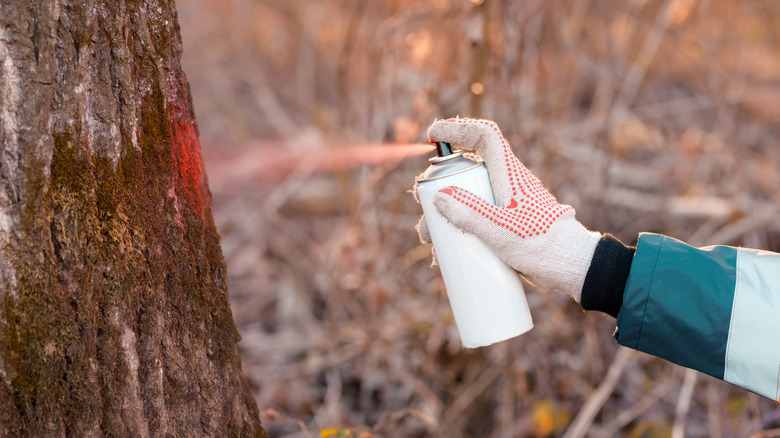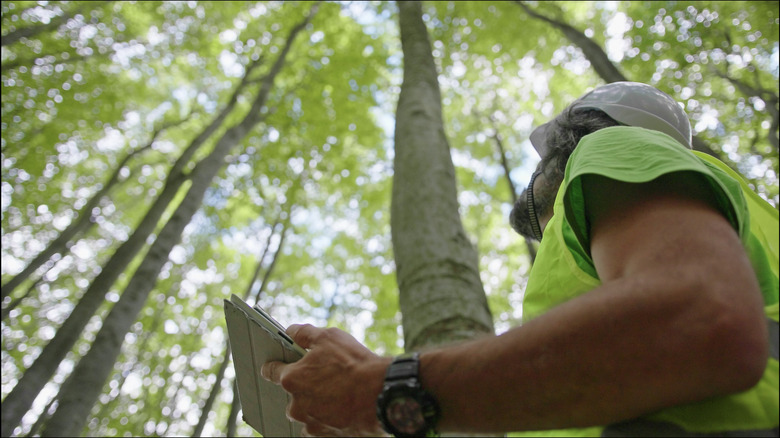Garden Trees, Shrubs & Vines
Claire Dangalan
Entering a forest can be a mystifying experience, especially for those unaccustomed to the subtle language written in strokes of color on the trees. For ordinary people like us, stumbling upon a tree painted in orange, for example, can be disconcerting, evoking questions about the purpose behind the enigmatic markings. However, understanding the significance of these colors can transform a disorienting forest into an informative guide. Depending on the area or state, a single horizontal orange line or dot (sometimes at the base of a tree) can mean the marked tree is to be cut or slated for harvest. In essence, it’s a message to those in the know that this particular tree is earmarked for utilization, part of a sustainable forestry practice where select trees are harvested to maintain a healthy and balanced forest ecosystem.
An orange (or pink) marking can also warn people to leave the tree alone. However, according to Hunters Land Management, if you see two horizontal orange (sometimes red) lines, it can also signify the border of the harvest area. These paint markings, whatever the color, serve as crucial communication tools, particularly for their intended audience — foresters, loggers, and land managers and owners. But again, you need to remember that the color choice and marking are arbitrary as, for example, in Butte County, California, if you find a tree with “two orange, parallel lines and an orange dot at the base,” it means that it’s dying or already dead.
Understanding the diversity of tree markings

Bits And Splits/Shutterstock
There’s a myriad of colors you could encounter on trees in a forest, each conveying a distinct message. Blue marks, for instance, might guide hikers along designated trails, ensuring they navigate the woods safely. A blue mark can also mean the tree is to be cut. However, a horizontal blue line, ring, or a single blue dot can also indicate that the tree should be left as is. Aside from indicating harvest boundaries, red markings may indicate that the property is owned by the U.S. Forest Service and you’re trespassing, so it’s time to go.
It’s important to note that there’s no universal standard for these colors and symbols. Various forestry agencies, landowners, and logging companies may adopt their own unique code tailored to their specific needs and practices. This diversity underscores the adaptability of these marking systems to the particular requirements of different regions and stakeholders.
Besides seeing tree markings in the forest, you may also find a couple in your town or city. In urban and suburban settings, tree markings also serve various purposes. They may use color-coded dots, bands, or lines to indicate a range of information, such as trees needing pruning and other specific types of maintenance, historically significant or valuable trees, damaged trees, or ones scheduled for removal.
Significance of tree marking systems

Daniel Balakov/Getty Images
The evolution of these marking systems is rooted in the need for efficient forest management. Landowners, logging companies, and agencies like the U.S. Forest Service all play a role in the careful orchestration of sustainable forestry. The markings provide a means of communication between stakeholders, ensuring that harvesting, conservation, and recreational activities are conducted harmoniously.
For landowners, these markings are a strategic tool in managing their property, guiding selective harvesting, and promoting the overall health of the forest. Logging company workers rely on these codes for efficient operations, minimizing waste and environmental impact. The U.S. Forest Service employs them to balance conservation and utilization, ensuring forests remain resilient and productive. In essence, the language of colored markings on trees is a testament to the collaborative effort invested in preserving the delicate balance between humans and nature in our nation’s forests. Understanding this coded language transforms a seemingly perplexing forest into a harmonious tapestry of sustainable coexistence.



